Abstract
Tabak, Henry H. (Robert A. Taft Sanitary Engineering Center, Cincinnati, Ohio), Cecil W. Chambers, and Paul W. Kabler. Microbial metabolism of aromatic carbon compounds. I. Decomposition of phenolic compounds and aromatic hydrocarbons by phenol-adapted bacteria. J. Bacteriol. 87:910–919. 1964.—Bacteria from soil and related environments were selected or adapted to metabolize phenol, hydroxy phenols, nitrophenols, chlorophenols, methylphenols, alkylphenols, and arylphenols when cultured in mineral salts media with the specific substrate as the sole source of carbon. A phenol-adapted culture (substrate-induced enzyme synthesis proven) was challenged in respirometric tests with 104 related compounds; probable significant oxidative activity occurred with 65. Dihydric phenols were generally oxidized; trihydric phenols were not. Cresols and dimethylphenols were oxidized; adding a chloro group increased resistance. Benzoic and hydroxybenzoic acids were oxidized; sulfonated, methoxylated, nitro, and chlorobenzoic acids were not; m-toluic acid was utilized but not the o- and p-isomers. Benzaldehyde and p-hydroxybenzaldehyde were oxidized. In general, nitro- and chloro-substituted compounds and the benzenes were difficult to oxidize.
Full text
PDF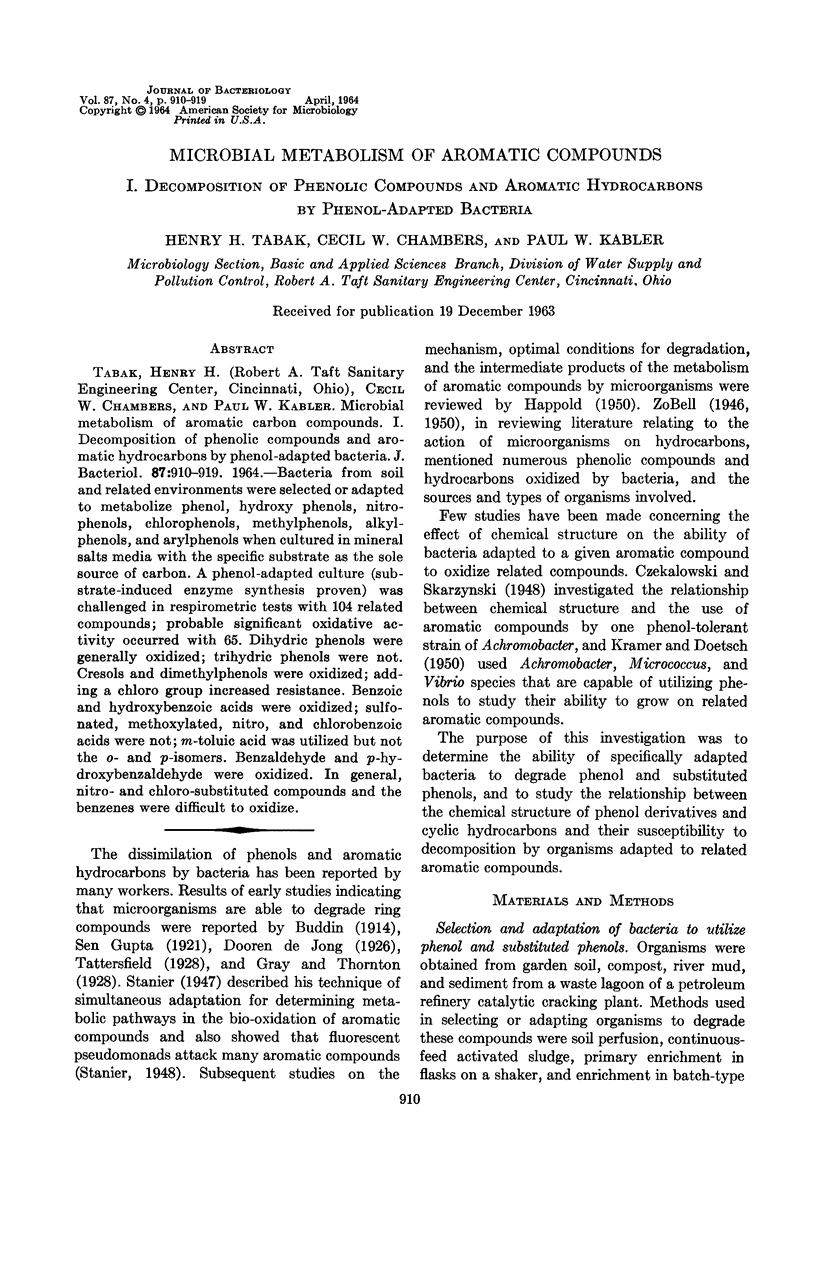
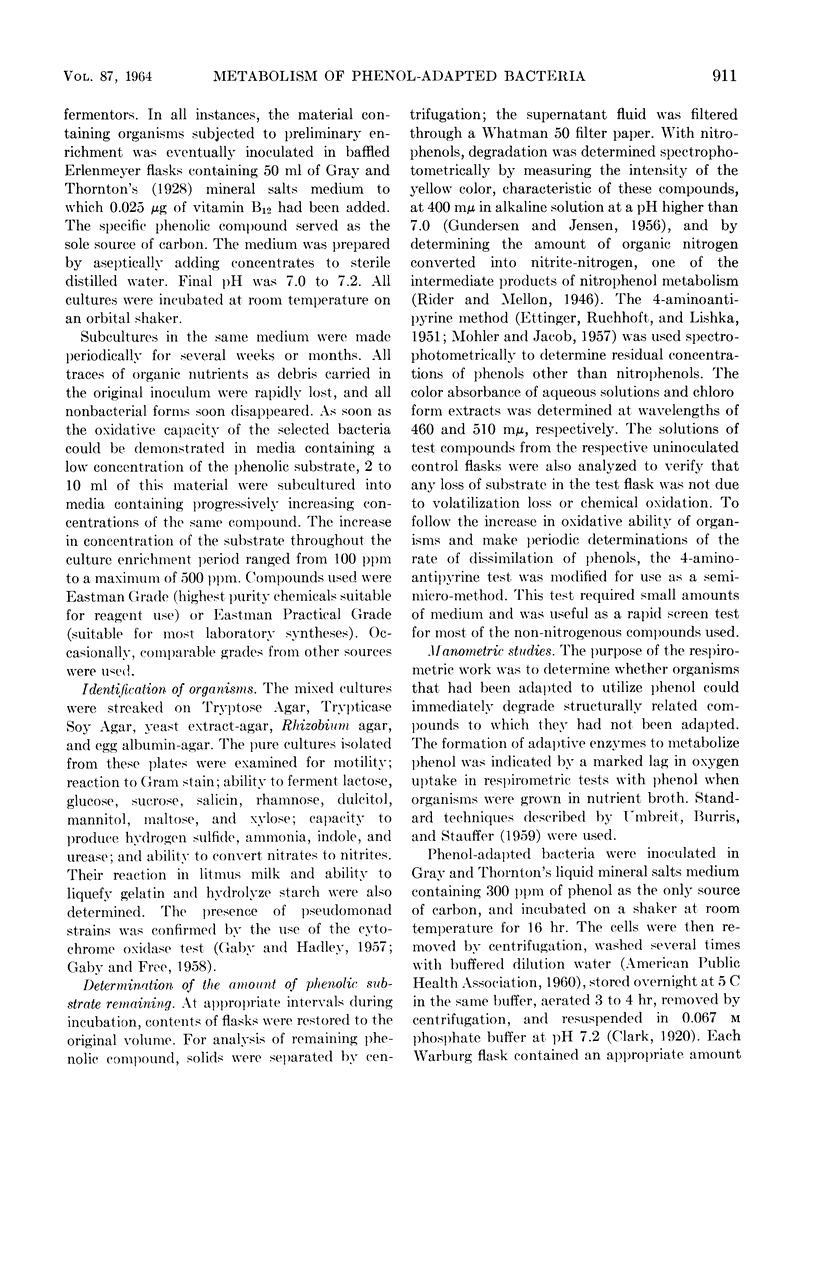
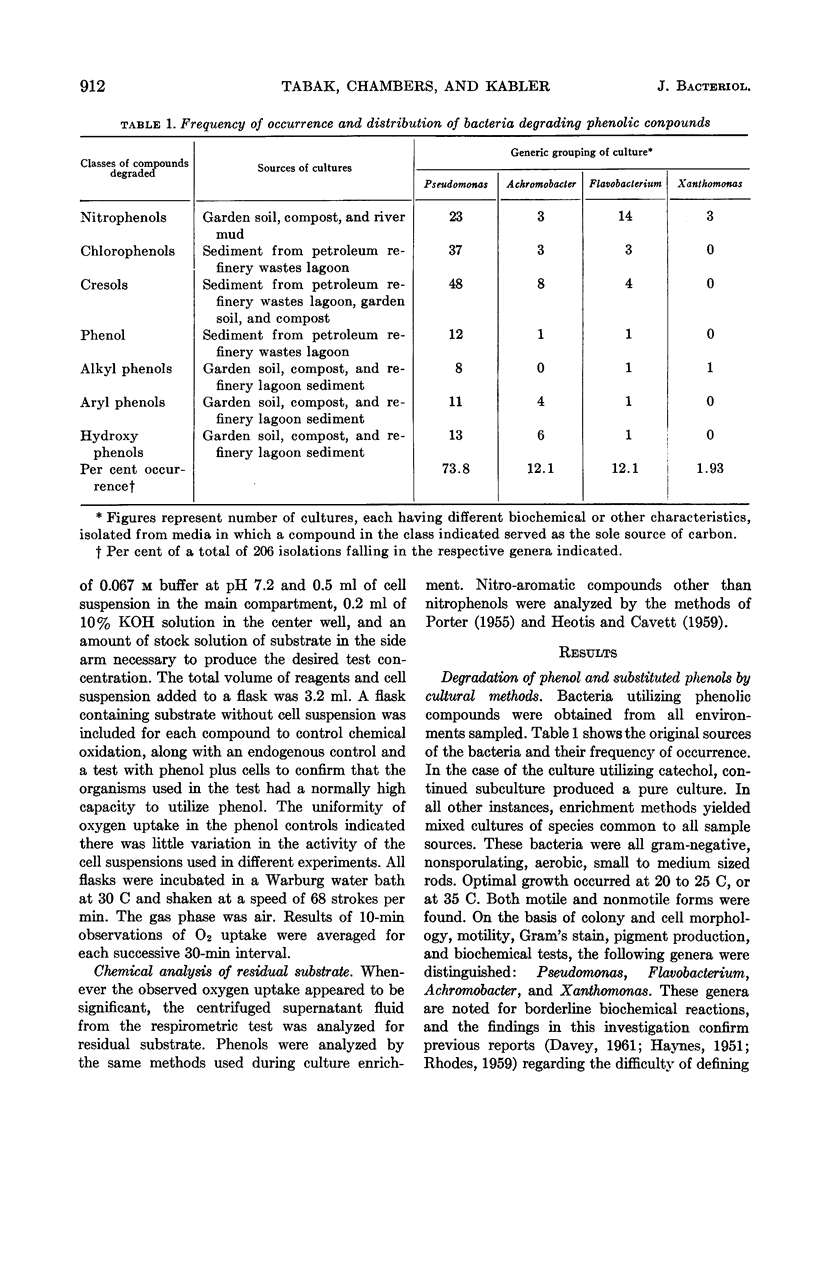
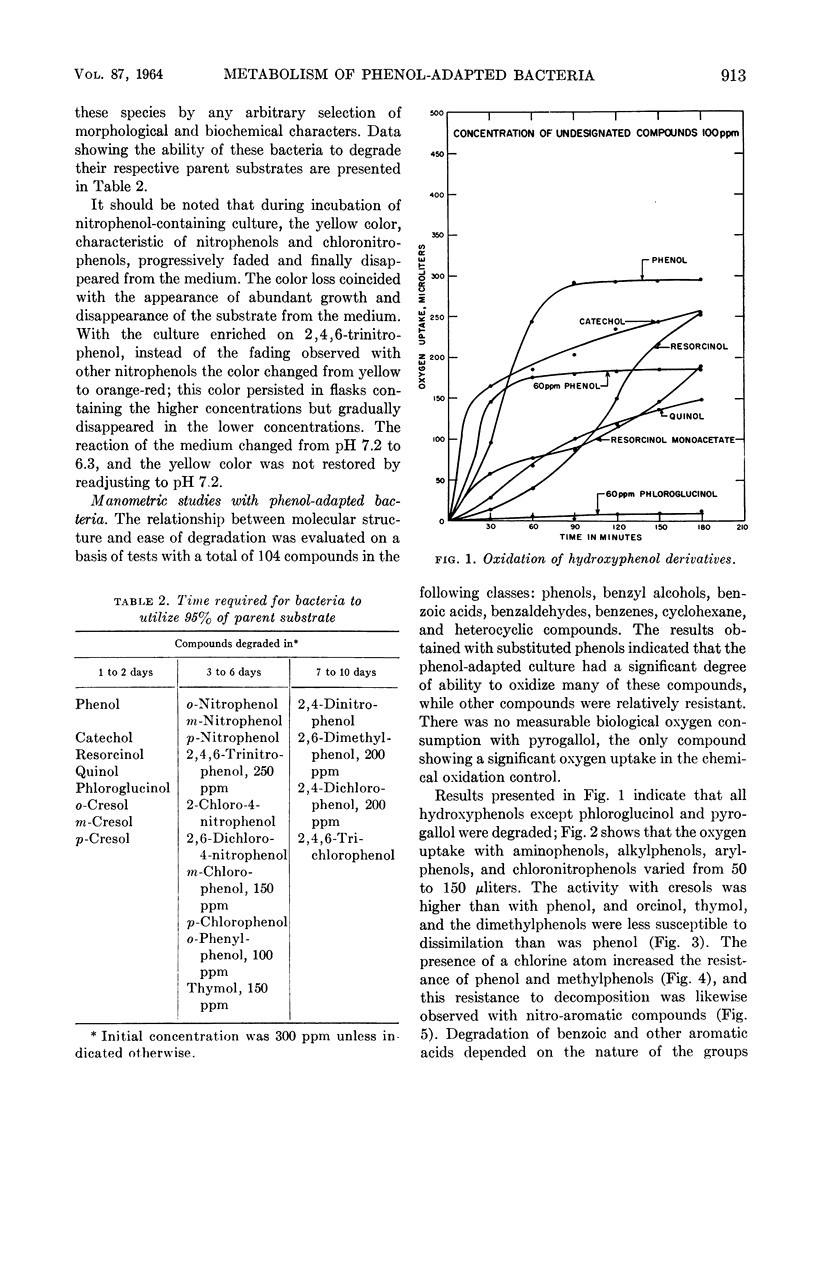
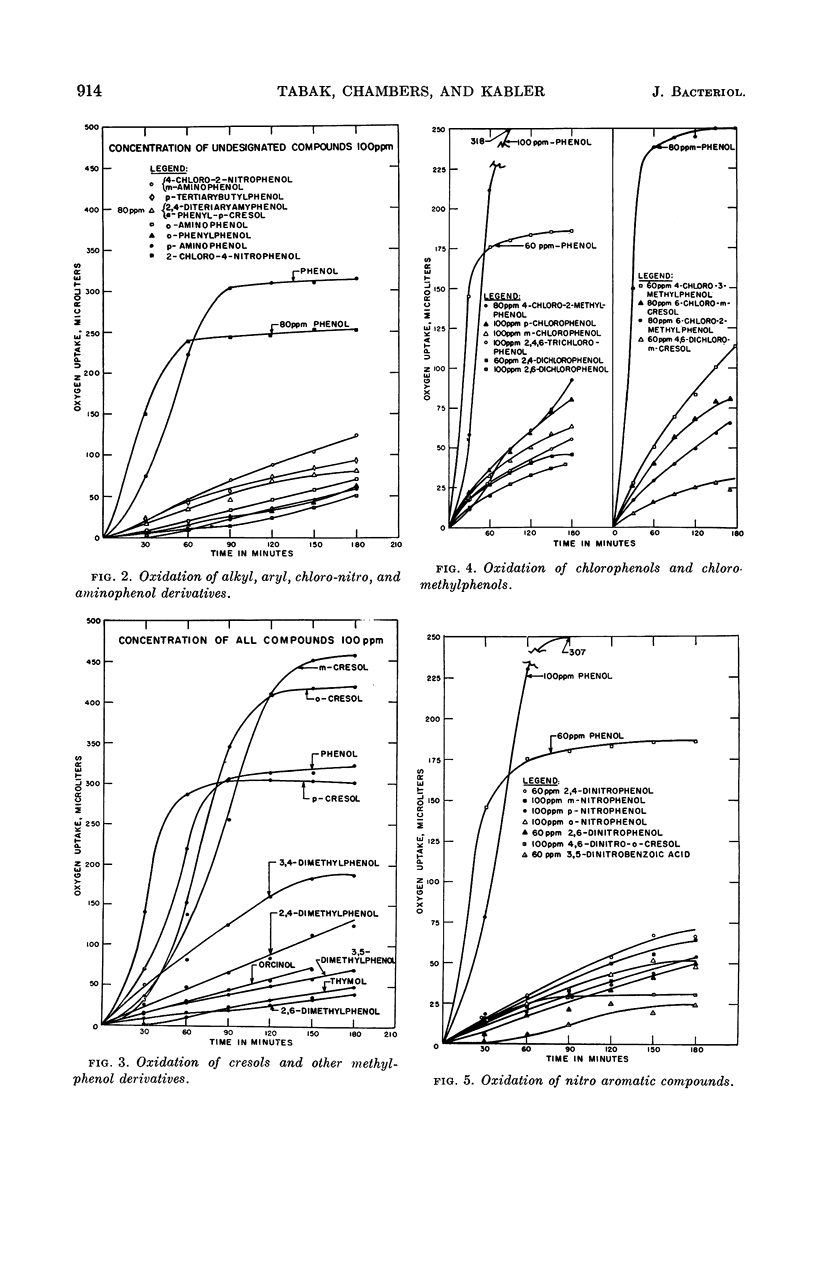
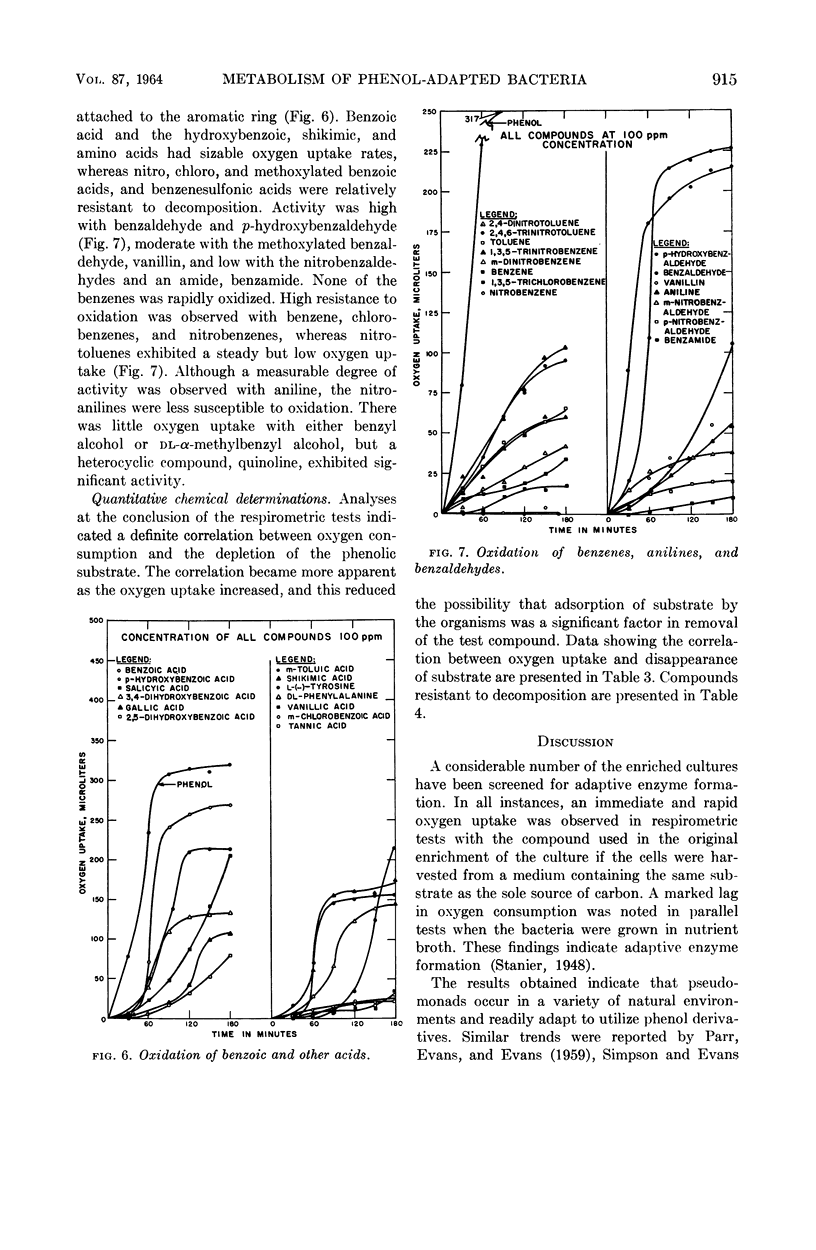
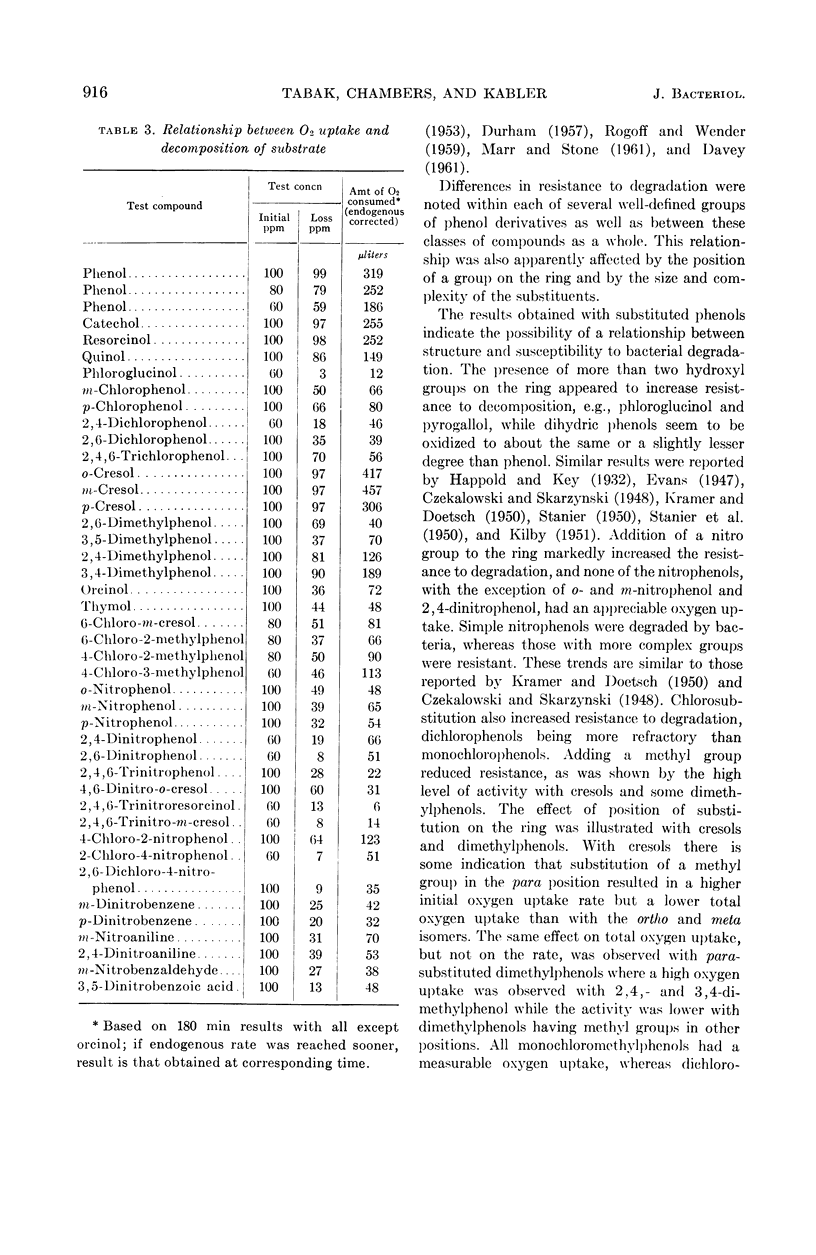
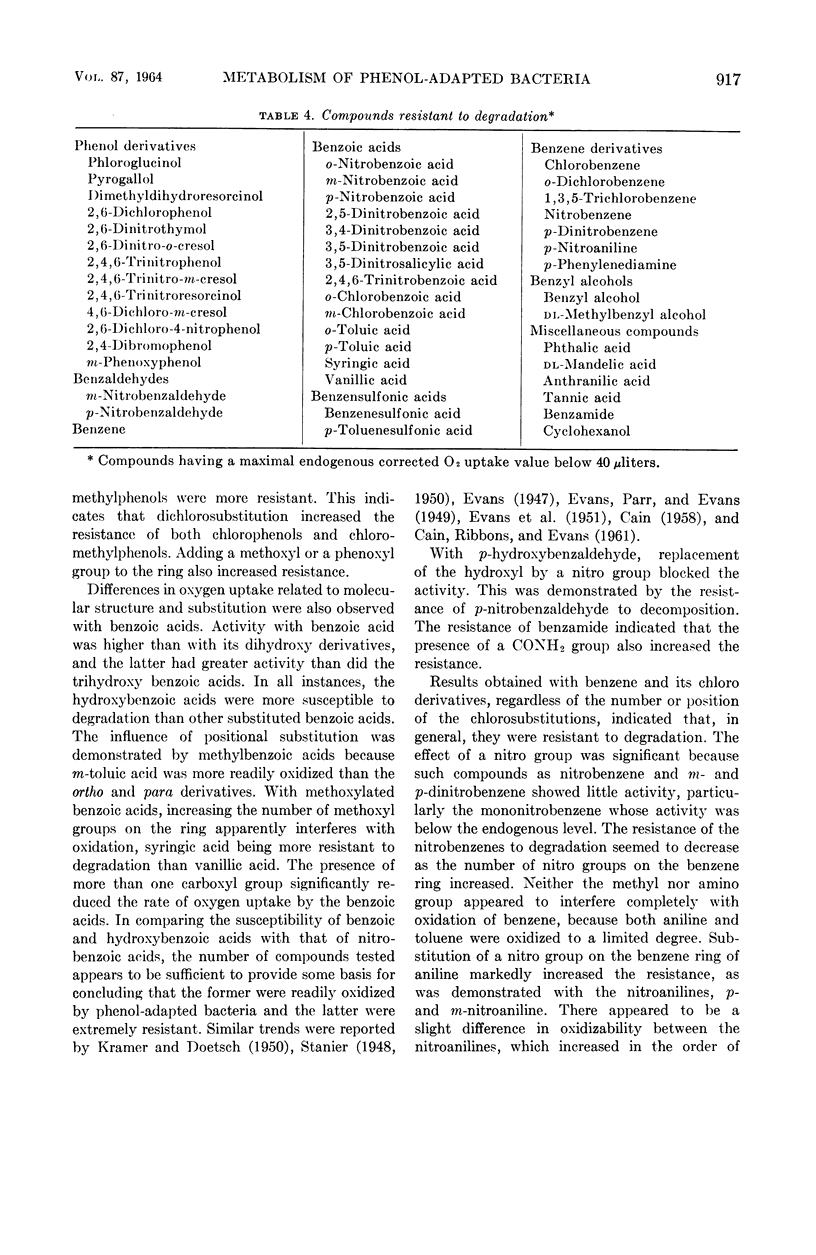
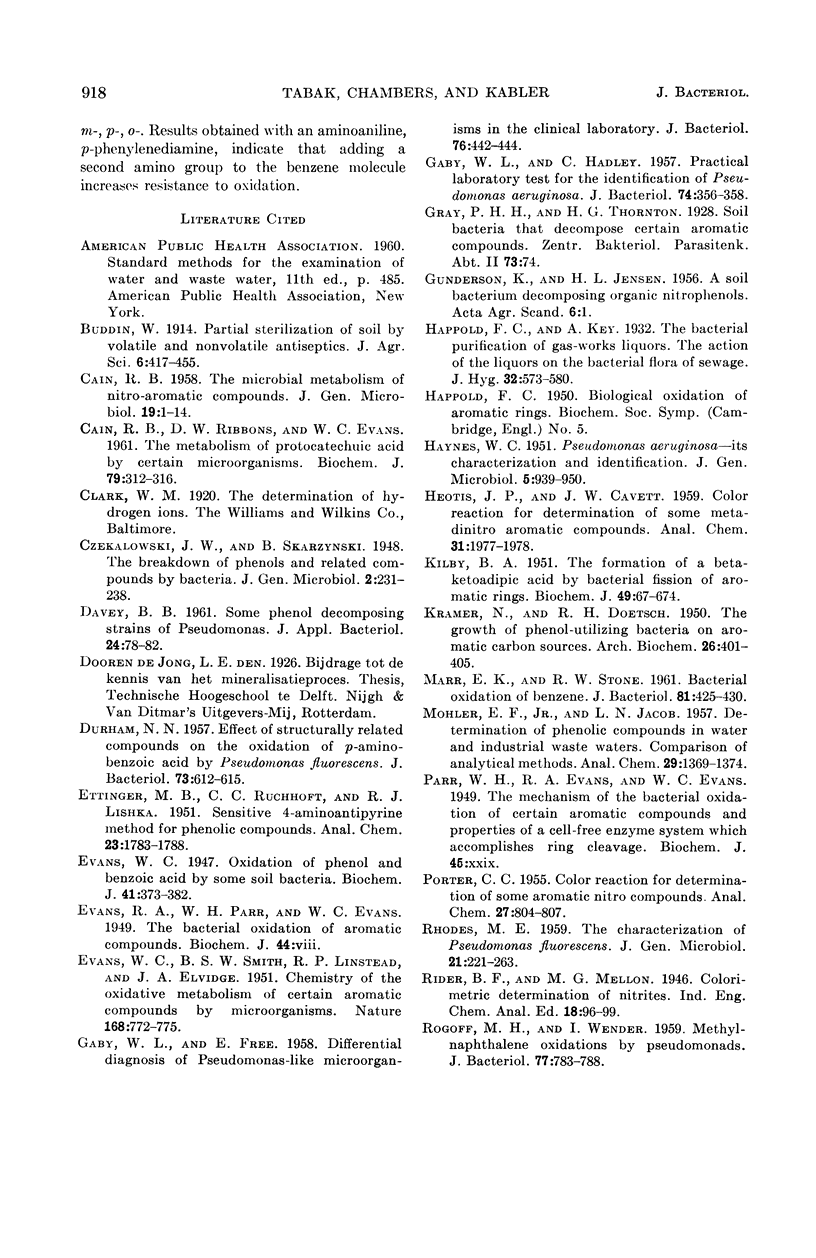
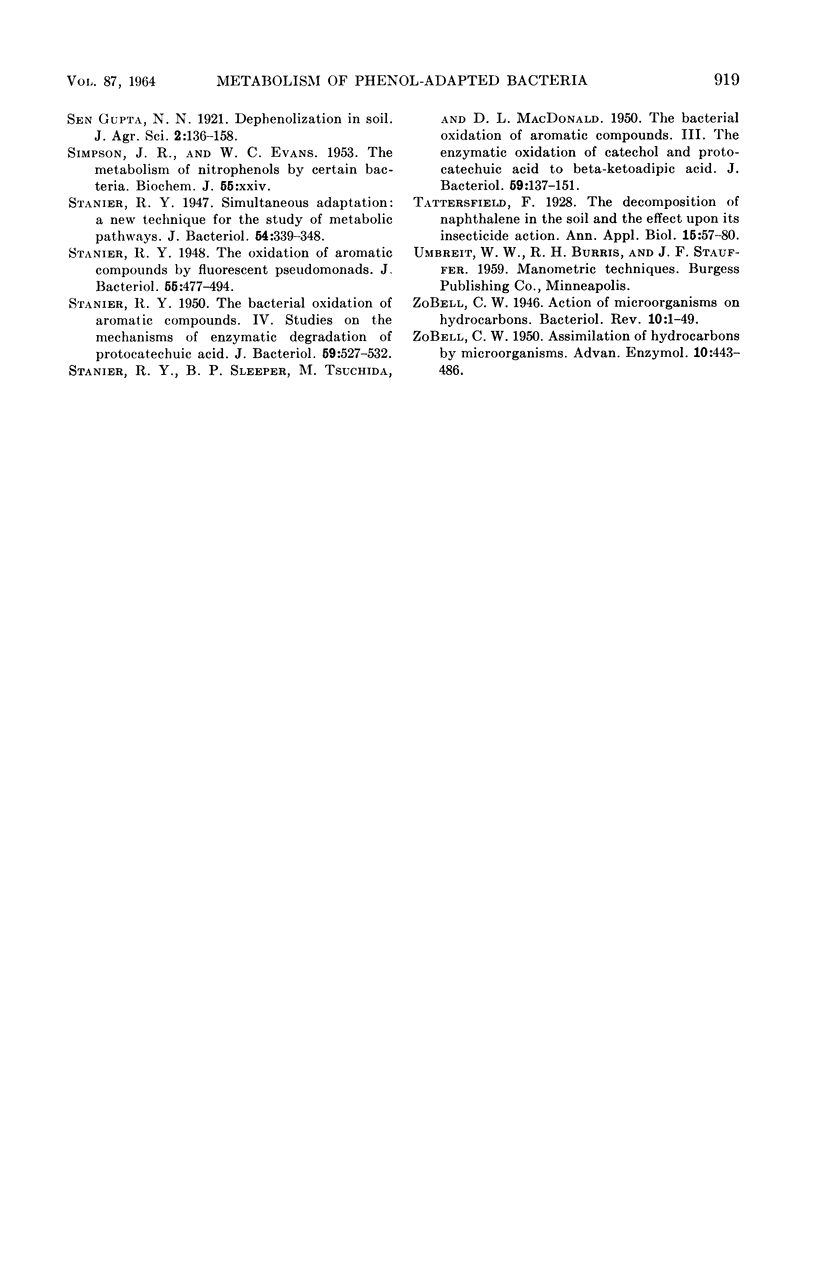
Selected References
These references are in PubMed. This may not be the complete list of references from this article.
- CAIN R. B. The microbial metabolism of nitro-aromatic compounds. J Gen Microbiol. 1958 Aug;19(1):1–14. doi: 10.1099/00221287-19-1-1. [DOI] [PubMed] [Google Scholar]
- Cain R. B. The metabolism of protocatechuic acid by certain micro-organisms. A reassessment of the evidence for the participation of 2:6-dioxa-3:7-dioxobicyclo[3:3:0]octane as an intermediate. Biochem J. 1961 May;79(2):312–316. doi: 10.1042/bj0790312. [DOI] [PMC free article] [PubMed] [Google Scholar]
- DURHAM N. N. Effect of structurally related compounds on the oxidation of p-aminobenzoic acid by Pseudomonas fluorescens. J Bacteriol. 1957 May;73(5):612–615. doi: 10.1128/jb.73.5.612-615.1957. [DOI] [PMC free article] [PubMed] [Google Scholar]
- EVANS W. C., SMITH B. S. W., LINSTEAD R. P., ELVIDGE J. A. Chemistry of the oxidative metabolism of certain aromatic compounds by micro-organisms. Nature. 1951 Nov 3;168(4279):772–775. doi: 10.1038/168772a0. [DOI] [PubMed] [Google Scholar]
- Evans W. C. Oxidation of phenol and benzoic acid by some soil bacteria. Biochem J. 1947;41(3):373–382. doi: 10.1042/bj0410373. [DOI] [PMC free article] [PubMed] [Google Scholar]
- GABY W. L., FREE E. Differential diagnosis of Pseudomonas-like microorganisms in the clinical laboratory. J Bacteriol. 1958 Oct;76(4):442–444. doi: 10.1128/jb.76.4.442-444.1958. [DOI] [PMC free article] [PubMed] [Google Scholar]
- GABY W. L., HADLEY C. Practical laboratory test for the identification of Pseudomonas aeruginosa. J Bacteriol. 1957 Sep;74(3):356–358. doi: 10.1128/jb.74.3.356-358.1957. [DOI] [PMC free article] [PubMed] [Google Scholar]
- HAYNES W. C. Pseudomonas aeruginosa--its characterization and identification. J Gen Microbiol. 1951 Nov;5(5 Suppl):939–950. doi: 10.1099/00221287-5-5-939. [DOI] [PubMed] [Google Scholar]
- KILBY B. A. The formation of beta-ketoadipic acid by bacterial fission of aromatic rings. Biochem J. 1951 Oct;49(5):671–674. doi: 10.1042/bj0490671. [DOI] [PMC free article] [PubMed] [Google Scholar]
- KRAMER N., DOETSCH R. N. The growth of phenol-utilizing bacteria on aromatic carbon sources. Arch Biochem. 1950 May;26(3):401–405. [PubMed] [Google Scholar]
- MARR E. K., STONE R. W. Bacterial oxidation of benzene. J Bacteriol. 1961 Mar;81:425–430. doi: 10.1128/jb.81.3.425-430.1961. [DOI] [PMC free article] [PubMed] [Google Scholar]
- ROGOFF M. H., WENDER I. Methylnaphthalene oxidations by pseudomonads. J Bacteriol. 1959 Jun;77(6):783–788. doi: 10.1128/jb.77.6.783-788.1959. [DOI] [PMC free article] [PubMed] [Google Scholar]
- STANIER R. Y., SLEEPER B. P., TSUCHIDA M., MACDONALD D. L. The bacterial oxidation of aromatic compounds; III. The enzymatic oxidation of catechol and protocatechuic acid to beta-ketoadipic acid. J Bacteriol. 1950 Feb;59(2):137–151. doi: 10.1128/jb.59.2.137-151.1950. [DOI] [PMC free article] [PubMed] [Google Scholar]
- STANIER R. Y. The bacterial oxidation of aromatic compounds. IV. Studies on the mechanism of enzymatic degradation of protocatechuic acid. J Bacteriol. 1950 Apr;59(4):527–532. doi: 10.1128/jb.59.4.527-532.1950. [DOI] [PMC free article] [PubMed] [Google Scholar]
- Stanier R. Y. Simultaneous Adaptation: A New Technique for the Study of Metabolic Pathways. J Bacteriol. 1947 Sep;54(3):339–348. doi: 10.1128/jb.54.3.339-348.1947. [DOI] [PMC free article] [PubMed] [Google Scholar]
- Stanier R. Y. The Oxidation of Aromatic Compounds by Fluorescent Pseudomonads. J Bacteriol. 1948 Apr;55(4):477–494. doi: 10.1128/jb.55.4.477-494.1948. [DOI] [PMC free article] [PubMed] [Google Scholar]
- ZOBELL C. E. Assimilation of hydrocarbons by microorganisms. Adv Enzymol Relat Subj Biochem. 1950;10:443–486. doi: 10.1002/9780470122556.ch9. [DOI] [PubMed] [Google Scholar]
- Zobell C. E. ACTION OF MICROORGANISMS ON HYDROCARBONS. Bacteriol Rev. 1946 Mar;10(1-2):1–49. [PMC free article] [PubMed] [Google Scholar]


